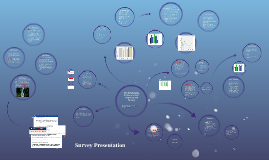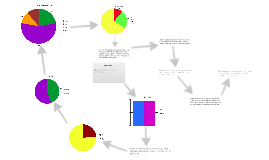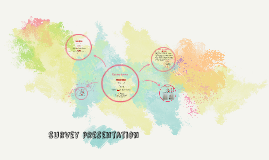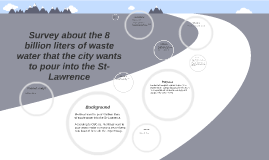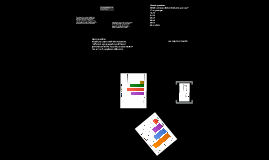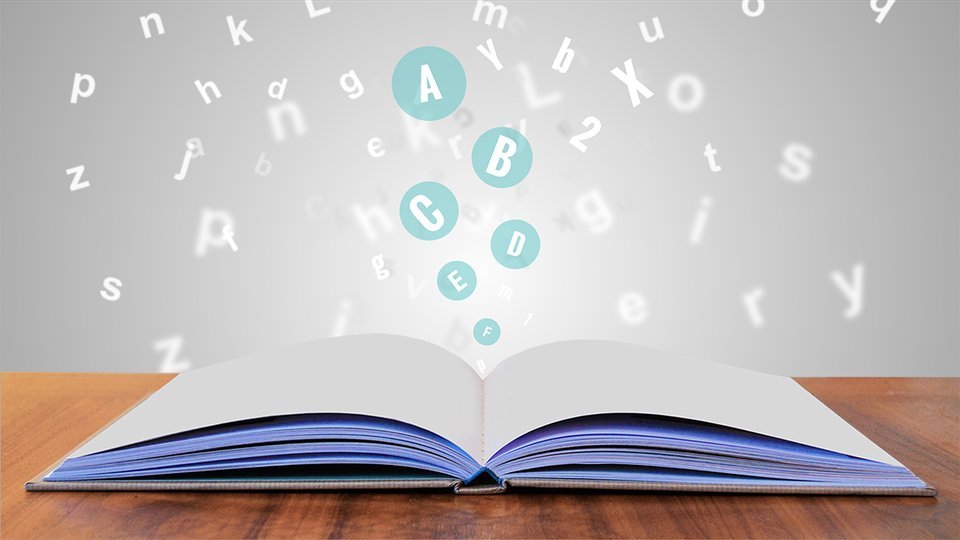Survey Presentation
Transcript: Hypothesis: Students who report more frequent or more satisfying sexual behaviors will have less anxiety. Anxiety and Frequency- Negative correlation, very insignificant The higher the frequency of sexual behaviors, the lower anxiety (barely) Bidirectional Anxiety is highest for females who engage in sexual behaviors fewer than 5 times a month. Males show low anxiety with greater frequency of sexual behaviors (20+) Definition of sexual behaviors intentionally ambiguous Satisfaction with last sexual experience Mean: 4.28 (after N/As filtered out) leaning towards "slightly satisfied" Std. Deviation: 1.53 r= -.003 p=.979 The Relationship Between Sexual Behaviors and Anxiety Anxiety and Number of Sexual Partners in the Past Year Anxiety Mean = 58.33 Anxiety Deviation = 15.335 Highest Possible Score = 102 Partners Mean = 2.70 Partners Deviation = 4.951 Cap = 30 Demographics Anxiety Mean = 58.33 Anxiety Deviation = 15.335 Highest Possible Score = 102 Masturbation Mean = 1.94 Masturbation Deviation = 2.226 Max = 7 Limitations Hypothesis: People who are more anxious are less likely to go home with someone they had recently met at a party. Results: N = 100 r = -.193 p- value = .054, p >.05 (almost significant) Demographics While the trend was negative the correlation was not significant and rejects the null hypothesis. The number of people who answered, "Not likely" and "Very likely" almost the same. Other factors can occur as to why someone may/may not want to go home with stranger, not just anxiety. WebMD Social anxiety was negatively related to sexual satisfaction, especially for women. Women might associate this dissatisfaction with negative evaluation and avoid future sexual behaviors. Women with high social anxiety have sex less frequently while men with high social anxiety have sex more frequently. Men are more likely to seek out pleasurable activities to distract from negative or anxious feelings while women are more likely to ruminate. Positive correlation, meaning the more anxiety they had the more sexual partners they had in the past year *Surprising, but not significant* ---- opposite of what lit review suggests Negative correlation, meaning the more anxiety they had, the less frequently they masturbated *Not significant* NHS Discussion (cont.) Jenna's Results Survey Presentation Lit Review Sexual attractions occur during states of strong emotion "Love on a Bridge" study with Thematic Apperception Tests. Shock experiment (Dutton & Aron 1974) NBC r = 0.106, p = 0.294 Lit Review Jessica's Results References Jessica's Discussion Questions? Thank you :) In each ethnic group, except Asian/Pacific Islander, females had higher anxiety levels than males Comparing the White population to Black/African American, the levels were fairly proportional *Surprising* Jessica's Discussion Social desirability bias Not random sampling People could have different definitions of sexual behavior Many of our participants were not and never have been sexually active (one third) Difficult to measure anxiety in a short survey Lit Review Look at specific types of anxiety Define sexual behaviors Ask about current relationship status Interview style Francesca's Discussion Terleki et al (2017) reported that: Higher Social Anxiety (HSA) college students reported more frequent alcohol-influenced sexual risk including regretted sexual situations, unprotected sex, sex with unwanted partners, unwanted sex, pressured/forced to have sex, and pressured someone to have sex. Coping motives significantly interacted with social anxiety group in the prediction of risky sexual behaviors except regretted sexual situations, such that HSA students with greater coping motives experienced more frequent sexual risk when drinking. Leary & Dobbins (1983) reported that: Highly anxious people were less sexually experienced, engaged in sexual activity less frequently, and had fewer sexual partners Kenney et al (2014) reported that: College men are more motivated to engage in hooking up behaviors relative to their female peers, regardless of the specific motivator Jenna Patel, Francesca Peavie and Jessica Bimstein Jessica's Results Jenna's Discussion Satisfaction and Anxiety almost no correlation, almost no significance Less satisfied, more anxiety Bidirectional Limited by N/A group Females are more satisfied, males are less satisfied 32 males, 68 females Kashdan et al (2011) found that: Demographics Lit Review We surveyed 101 undergraduate and graduate students at a small, mid-Atlantic, liberal arts college by sending a link to the survey to group chats, text messages, and Facebook groups. We conducted a pilot study which was successful. We recoded anxiety to be a sum of Likert scale responses. We excluded one participant. Dutton, D. G. & Aron, A. P. (1974). Some evidence for heightened sexual attraction under conditions of high anxiety. Journal of Personality and Social Psychology, 30(4), 510-517. Kashdan, T. B., Adams, L., Savostyanova, A., Ferssizidis, P.,






